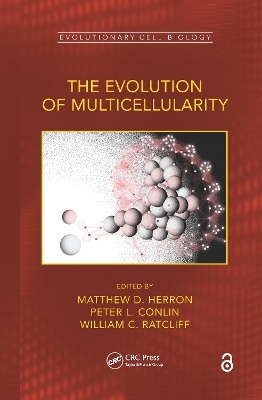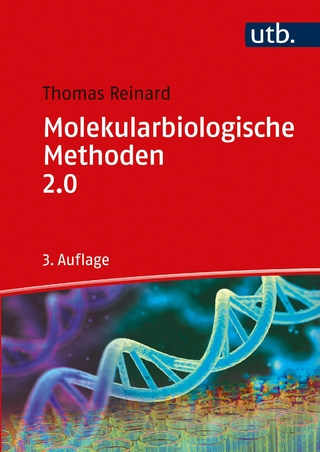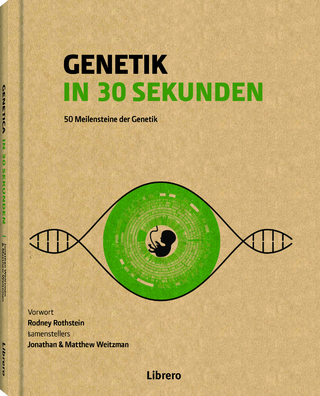
The Evolution of Multicellularity
CRC Press (Verlag)
978-0-367-35696-5 (ISBN)
Among the most important innovations in the history of life is the transition from single-celled organisms to more complex, multicellular organisms. Multicellularity has evolved repeatedly across the tree of life, resulting in the evolution of new kinds of organisms that collectively constitute a significant portion of Earth’s biodiversity and have transformed the biosphere. This volume examines the origins and subsequent evolution of multicellularity, reviewing the types of multicellular groups that exist, their evolutionary relationships, the processes that led to their evolution, and the conceptual frameworks in which their evolution is understood. This important volume is intended to serve as a jumping-off point, stimulating further research by summarizing the topics that students and researchers of the evolution of multicellularity should be familiar with, and highlighting future research directions for the field.
Chapter 13 of this book is freely available as a downloadable Open Access PDF at http://www.taylorfrancis.com under a Creative Commons Attribution-Non Commercial-No Derivatives (CC-BY-NC-ND) 4.0 license.
Matthew D. Herron is a Senior Research Scientist in the School of Biology at the Georgia Institute of Technology. He received his PhD from the University of Arizona and held postdoctoral positions at the University of British Columbia, the NASA Astrobiology Institute, and the University of Montana. He has authored or co-authored dozens of peer reviewed scientific papers. William C. Ratcliff is an Associate Professor in School of Biological Sciences at the Georgia Institute of Technology, where he co-directs the Interdisciplinary Graduate Program in Quantitative Biosciences. He received his PhD from the University of Minnesota. At Tech, he leads a research group that examines the evolution of multicellularity through directed evolution, synthetic biology, and mathematical modeling. Peter L. Conlin is a Postdoctoral Researcher in the School of Biological Sciences at the Georgia Institute of Technology. He received his PhD from the University of Washington. He has authored or co-authored several peer reviewed scientific papers.
Foreword by Andrew H. Knoll. Acknowledgments. List of Contributors. Introduction: The Evolution of Multicellularity in Context. Getting at the Basics of Multicellularity. Multi-Level Selection of the Individual Organism. Life Cycles as a Central Organizing Theme for Studying Multicellularity. Eukaryote Aggregative Multicellularity: Phylogenetic Distribution and a Case Study of Its Proximate and Ultimate Cause in Dictyostelia. Group Formation: On the Evolution of Aggregative Multicellularity. Group Maintenance in Aggregative Multicellularity. Group Transformation: Fruiting Body and Stalk Formation. Phylogenetics of Clonal Multicellularity. Group Formation: Hypotheses for the Evolution of Clonal Multicellularity. Group Maintenance in Clonal Multicellularity: Controlling Intra-organismal Evolution. Group Transformation: Life History Trade-offs, Division of Labor, and Evolutionary Transitions in Individuality. The Single-Celled Ancestors of Animals: A History of Hypotheses. Convergent Evolution of Complex Multicellularity in Fungi. Genetic and Developmental Mechanisms of Cellular Differentiation in Algae. The Evolution of Complex Multicellularity in Streptophytes. Multi-Species Multicellular Life Cycles. Conclusion: The Future of Multicellularity Research. Index.
| Erscheinungsdatum | 01.06.2022 |
|---|---|
| Reihe/Serie | Evolutionary Cell Biology |
| Zusatzinfo | 3 Tables, black and white; 25 Line drawings, color; 11 Line drawings, black and white; 19 Halftones, color; 44 Illustrations, color; 11 Illustrations, black and white |
| Verlagsort | London |
| Sprache | englisch |
| Maße | 156 x 234 mm |
| Gewicht | 453 g |
| Themenwelt | Naturwissenschaften ► Biologie ► Genetik / Molekularbiologie |
| Naturwissenschaften ► Biologie ► Zellbiologie | |
| ISBN-10 | 0-367-35696-1 / 0367356961 |
| ISBN-13 | 978-0-367-35696-5 / 9780367356965 |
| Zustand | Neuware |
| Haben Sie eine Frage zum Produkt? |
aus dem Bereich


